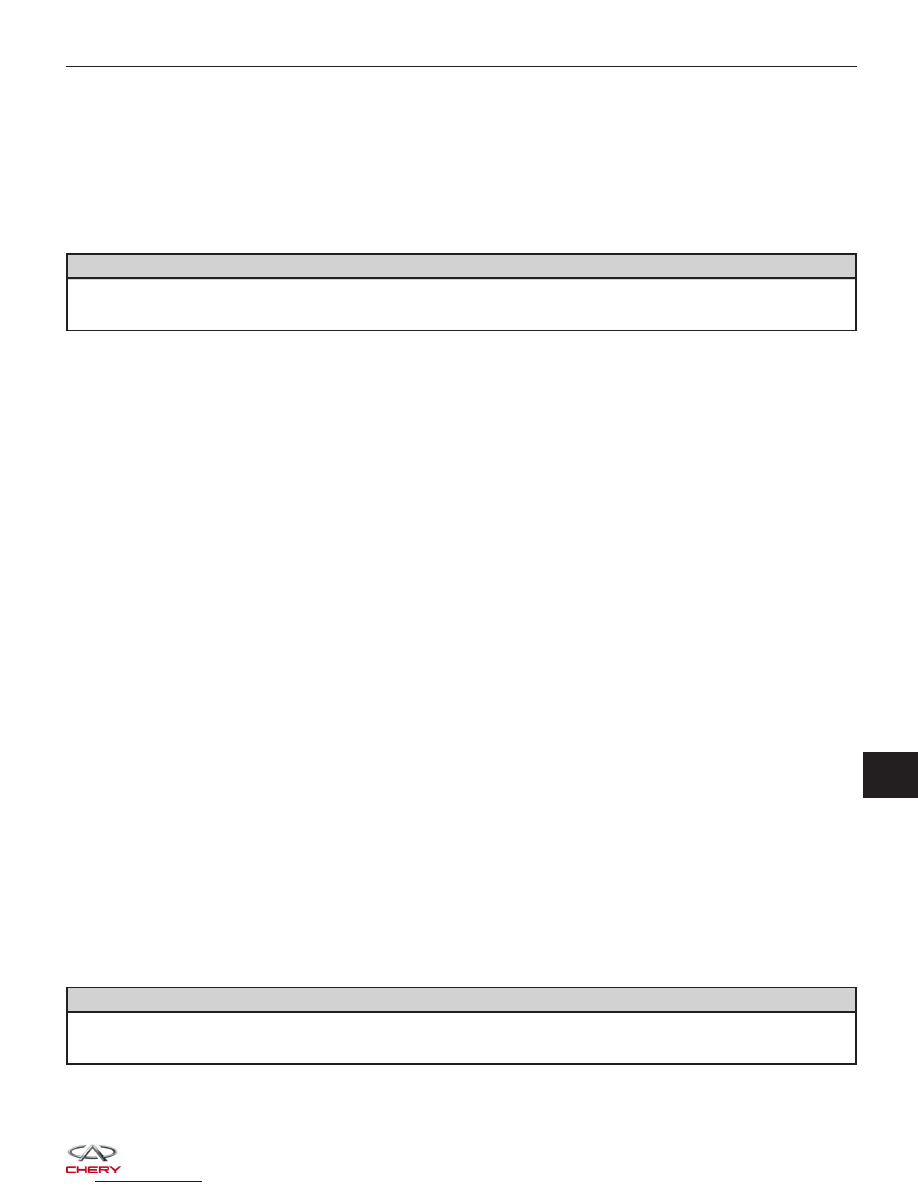Chery Tiggo. Manual - part 381

2. A manifold gauge set and an R-134a refrigerant recovery/recycling/charging station that meets SAE standard
J2210 should be connected to the refrigerant system.
3. Open both the suction and discharge valves, then open the charge valve to allow the refrigerant to flow into the
system.
4. When the transfer of refrigerant has stopped, close both the suction and discharge valves.
5. If all of the refrigerant charge did not transfer from the dispensing device, open all of the windows in the vehicle
and set the heating-A/C system controls so that the A/C compressor is operating and the blower motor is running
at its lowest speed setting. Run the engine at a steady high idle (about 2000 RPM).
6. Open the low-pressure valve to allow the remaining refrigerant to transfer to the refrigerant system.
WARNING!
Take care not to open the discharge (high pressure) valve at this time. Failure to follow this warning could result
in possible personal injury or death.
7. Disconnect the refrigerant recovery/recycling station from the refrigerant system service ports.
8. Reinstall the caps onto the refrigerant system service ports.
Compressor
Description
Vehicles equipped with the 1.6L & 1.8L & 2.0L engine use a SD7V16 clutch-less compressor. The 2.4L equipped
vehicles use a V5 clutch-less compressor. The compressor is a variable displacement compressor. The largest dis-
placement is 161.3 ml/r, displacement range of 5% to 100%.
CAUTION:
DON
ⴕT run the engine with a vacuum pump in operation or with a vacuum present within the A/C
system. Failure to follow this caution will result in serious A/C compressor damage.
NOTE :
The compressor drive hub and the pulley and bearing assembly cannot be serviced separately from the A/C com-
pressor. In the event of drive hub or pulley and bearing assembly damage or failure, the A/C compressor, drive hub
and pulley and bearing must be replaced as an assembly.
Operation
The A/C compressor is controlled by the Engine Control Module (ECM), depending on engine application. The ECM
calculates compressor displacement required by A/C system load and demand by monitoring vehicle speed, A/C high
side pressure, engine speed, evaporator temperature, accelerator pedal position, ambient temperature and A/C-
Heater request signals. The ECM then sends a pulse width modulated signal to the A/C compressor control solenoid
to increase or decrease refrigerant flow through an orifice located within the compressor housing. The amount of
refrigerant allowed to pass through the orifice in the compressor determines the head pressure which controls the
angle of the swash plate, which in turn, determines the amount of compressor displacement. When there is no
demand for A/C, the swashplate is adjusted to nearly a zero degree angle, which removes compressor torque drag
from the engine.
NOTE :
The A/C compressor cannot be repaired and it must be replaced if found inoperative or damaged. If an internal fail-
ure of the A/C compressor has occurred, the A/C accumulator and the A/C liquid line must also be replaced.
Removal & Installation - 1.6L & 1.8L & 2.0L
WARNING!
Review safety precautions and warnings in this group before performing this procedure. Failure to follow the
warnings and cautions could result in possible personal injury or death.
ON-VEHICLE SERVICE
13